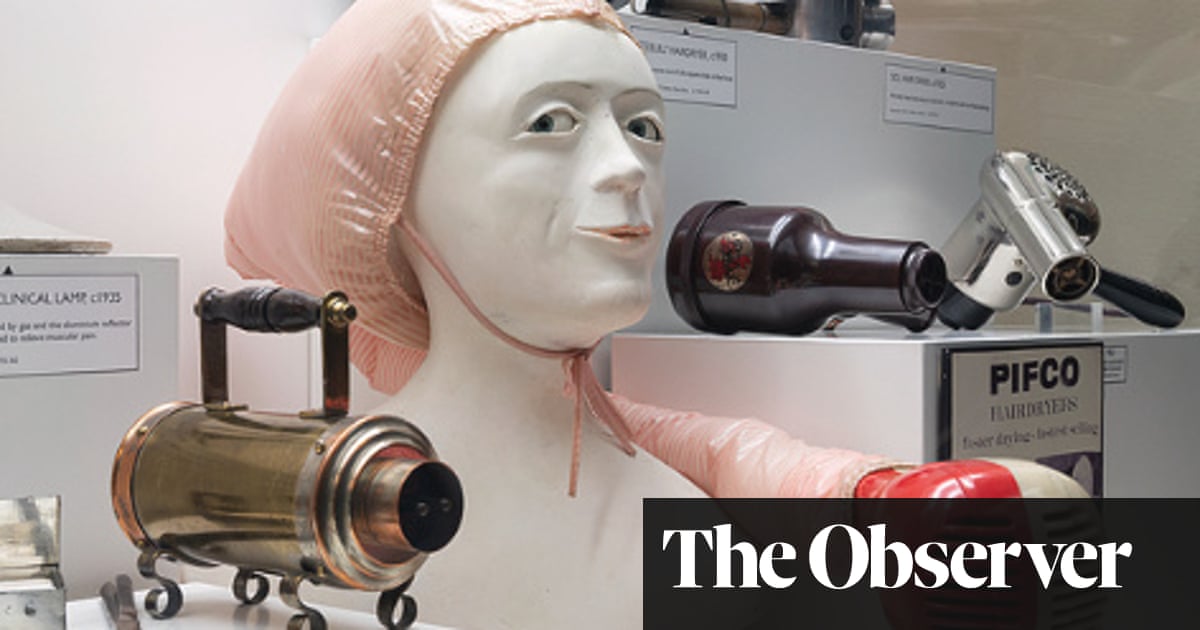They changed our parents’ and grandparents’ lives by using technology to tackle the curse of household drudgery. Thanks to the vacuum cleaner, fridge, washing machine and microwave, the lives of householders were transformed in a few generations.
But now the UK’s principal museum collection of domestic devices – from horse-drawn vacuum cleaners to pop-up toasters – is set to close. On 2 June, London’s Science Museum will permanently shut its gallery Secret Life of the Home, a 29-year-old treasure trove of household gadgets that range from early microwaves to the first flushing toilets.
“Our devices are getting old, many of the interactive displays are not working properly and we are finding it very hard to get spare parts,” Jessica Bradford, principal curator at the Science Museum, told the Observer last week. “Quite simply it is time to retire the gallery.”
Over the summer, hundreds of these appliances – which also include early gramophones as well as a set of 1920 gas-heated curling tongs, a clockwork flycatcher and a late 19th-century raisin stoner – will be taken to the museum’s Science and Innovation Park near Swindon and put in storage. Public tours as well as school and research visits will be allowed. “If a historian is doing research on the impact of the vacuum cleaner on everyday life, this will still be the place to go,” said Bradford.
However, the collection of household wonders originally assembled by the Science Museum will no longer be available for casual visits by the public who have flocked in their millions to the gallery since its launch in 1995. “There is no doubt the Secret Life of the Home gallery was popular,” added Bradford.
“However, a lot of that attraction has got to do with nostalgia. People remember old devices from their childhood – their parents’ gramophones or twin-tub washing machines. Nostalgia is not necessarily the approach that the Science Museum should be providing for our galleries.”
Among the most striking displays is one that follows the rise of the British vacuum cleaner. The earliest of these devices were the size of carts and were drawn by horses. Pipes and nozzles were pushed through windows or doors so that operators could vacuum a house. People would pay large sums just to have their homes vacuum-cleaned this way. Today, we can vacuum a room in minutes any time we choose.
Such ease of use would suggest people need to spend less and less time cleaning and cooking. In fact, it seems we spend as much time on domestic duties as we did 50 years ago. “If it becomes easier and quicker to wash your clothes, you tend to do it more often,” added Bradford.
“So we are probably spending the same amount of time cleaning our homes and clothing as we did 50 years ago. It is just that we are doing it more intensely. Certainly, the idea that there was going to be this revolution in domestic technology, and suddenly we would be languishing in free time, has just not come to pass.”
Some appliances – such as fridges and cookers – have maintained their popularity since their first appearances in our homes. Others flourished and then disappeared – such as Teasmades, which once adorned cabinets in millions of bedrooms across the country.
A Teasmade was designed to ensure a fresh pot of tea was ready for consumption when a person got out of bed. However, its early development was haphazard to say the least. One early device, dated 1904, used a metal arm, attached to a brass alarm clock, which – at a given time – moved to light a match on sandpaper and ignite a spirit lamp. This then heated water in a brass kettle and once boiled this was tipped into a teapot while a bell rang to announce that tea was ready. The risks of fire or scalding were considerable.
The arrival of electricity meant the use of gas or spirits to power Teasmades could be avoided and they acquired a popularity that reached a peak in the 1960s and 1970s even featuring in the video for Queen’s I Want to Break Free in which Brian May is scalded by one. However, demand has since slumped to the extent that, in the few places they are sold as new devices, they are done so as a retro novelty item.
Also on display are many of the adverts that were used to promote domestic appliances. With only a couple of exceptions, these focus on women as the individuals who were expected to make use of these devices. Glamorously dressed wives are seen shovelling coal into boilers in an advert for Coalite Nuts; others politely debate the hygienic virtues of Ekco plastic toilet seats, while another group celebrates the installation of a friend’s new Parnall washing machine by throwing a coffee and blanket-washing party.
However, the most popular of all displays at Secret Life of the Home was its cross-sectional display of a flushing toilet. This showed how a cistern fills up with water and is then emptied to flush away excrement in a toilet bowl – while a U-bend of water at its base prevents sewer smells from getting into a house.
The device was a favourite for almost every child who visited the gallery, especially when it went wrong. A small plastic poo – used to demonstrate the everyday fate of our bodily wastes – frequently went missing because it had been expelled from the exhibit and was lying at the bottom of the showcase. Staff had to return it to its original place.
“In fact, that interactive display is no longer operational,” said Bradford. “It stopped working a while ago which, if nothing else, is telling us it is probably time to move on.”

